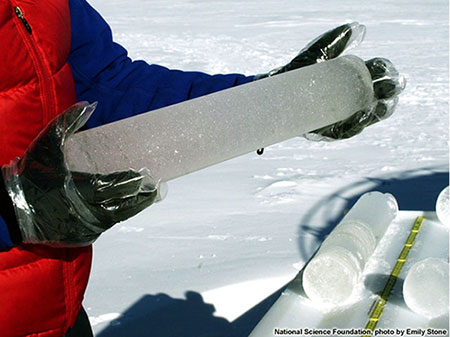TUTORIAL
Learn About Archaeology
Science & Technology in Archaeology
Ice Core Studies
Scientists analyze ice cores and inclusions within the ice—such as dust, ash, and pollen—to reconstruct climate changes over thousands of years.

Photo source: COMET® Website at http://meted.ucar.edu/ of the University Corporation for Atmospheric Research (UCAR), sponsored in part through cooperative agreement(s) with the National Oceanic and Atmospheric Administration (NOAA), U.S. Department of Commerce (DOC). ©1997-2013 University Corporation for Atmospheric Research. All Rights Reserved.
Ice cores have their own stratigraphy, which reflects past conditions and events—for example, a layer of ash in the ice might be a record of a major volcanic eruption, which in turn may have triggered a period of cooler temperatures. But perhaps the best clues to past climate lie in the properties of the ice itself: The ratio of different types of oxygen isotopes in water (and therefore ice) is dependent on temperature. Using stable isotope analysis, scientists are able to correlate changes in oxygen isotope ratios to periods of warming and cooling on a large scale.
Learn more:
Visit NASA’s Earth Observatory website to learn more about what ice can tell us about paleoclimates.
Ice Core 101 is an educational resource from the Climate Change Institute at the University of Maine.
